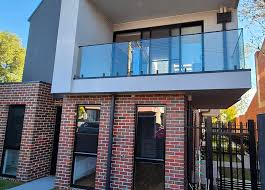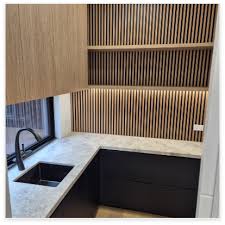Understanding the building process From concept to completion

For a practical example of a systematic approach to home construction, see building process https://www.prevailinghomes.com.au/our-process/
The building process is a sequence of coordinated phases that turn an idea into a physical structure. Whether the project is a custom home, a commercial development, or a renovation, the core stages remain similar: initial planning and brief, detailed design, approvals and permits, procurement, onsite construction, commissioning, and handover. Understanding each phase helps owners, designers, and contractors anticipate challenges, manage costs and timelines, and achieve the intended quality and functionality.
Planning and project brief. The building process starts with defining goals, budget, site constraints and functional requirements. A clear project brief addresses the intended use, spatial needs, aesthetic preferences, sustainability targets, and key milestones. Early feasibility studies assess zoning, access, ground conditions, and utilities. Investing time in this phase reduces costly changes later and sets realistic expectations for scope and cost.
Design and documentation. With a solid brief, the design team develops schematic designs that explore massing, layout and material concepts. These evolve into detailed architectural, structural and services drawings. Specifications and schedules define materials, finishes, fixtures and performance standards. Good documentation is the backbone of predictable pricing and quality control; it enables accurate contractor proposals and reduces ambiguities that can lead to disputes.
Approvals and permits. Before construction begins, projects must comply with local building codes, planning regulations and sometimes environmental or heritage requirements. Submitting drawings and supporting reports to authorities can take weeks or months, depending on complexity and jurisdiction. Early engagement with regulators and neighbors can smooth the approval process and identify constraints—such as easements or flood requirements—that influence design and cost.
Procurement and contracting. Selecting the procurement route—traditional tender, design-and-build, construction management or a negotiated contract—affects risk allocation and schedule. Tendering invites competitive pricing; negotiated contracts can speed mobilization with trusted builders. The procurement phase includes selecting subcontractors, suppliers and specialists, establishing contract conditions, and agreeing on milestones and payment terms. Clear contractual documents protect both owner and builder and set expectations for variations and claims.
Site preparation and foundations. Once permits are in place and contracts signed, the site is prepared: vegetation removal, temporary access, erosion controls and utilities setup. Geotechnical investigations guide foundation design, which may range from shallow footings to deep piles depending on soil and loads. Accurate setting out and quality-controlled excavation are essential; foundations determine long-term performance and stability of the building.
Structure and envelope. The structural frame—steel, concrete or timber—is erected to create the building’s load-bearing skeleton. As the frame rises, the building envelope (roof, walls, windows, and external cladding) is installed to protect interiors from weather. Sequencing these works while coordinating trades reduces delays. Attention to detailing at junctions, waterproofing and thermal breaks ensures durability, energy efficiency and occupant comfort.
Building services installation. MEP (mechanical, electrical, plumbing) systems are installed in parallel with interior construction. Early coordination between services engineers and builders is vital to avoid clashes and rework. Efficient routes for ductwork, piping and cabling save space and cost. Modern projects increasingly integrate smart controls, HVAC zoning, renewable energy and energy storage solutions—these require careful integration to meet performance goals.

Interior fit-out and finishes. With the envelope watertight and services in place, interior partitions, insulation, plastering, flooring and finishes proceed. This phase shapes the user experience through material selection, acoustics, lighting and ergonomics. Quality control here includes careful surface preparation, consistent workmanship and protection of finished elements from damage. Procurement lead times for bespoke items like joinery or specialty fixtures should be considered to prevent schedule bottlenecks.
Testing, commissioning and quality assurance. As systems are completed, they undergo testing and balancing to verify they meet design intent. Commissioning ensures HVAC, plumbing, electrical and safety systems operate reliably. Independent inspections and snagging lists identify defects to be rectified before handover. Robust quality assurance procedures, including documented test results and certificates, give owners confidence in performance and simplify future maintenance.
Handover and practical completion. Practical completion is declared when the building is fit for occupation, subject to minor outstanding items. Deliverables at handover typically include as-built drawings, warranties, operation manuals and maintenance schedules. Training for building operators or owners on system use and maintenance prolongs asset life and prevents early failures. Final financial reconciliation and defect liability periods are resolved according to contract terms.
Post-occupancy evaluation and maintenance. The building process does not end at handover. Post-occupancy reviews assess whether the building meets functional, comfort and energy targets. Feedback informs operational adjustments and future projects. A planned maintenance program preserves performance and value, addressing items like seals, coatings, filters and system calibrations at regular intervals.
Managing cost, time and risk. Effective project management balances scope, schedule and budget. Early cost planning and value engineering identify opportunities to reduce cost without compromising quality. Schedule management relies on realistic sequencing, procurement lead times and contingency for weather or supply disruptions. Risk registers, regular site meetings and clear communication channels between stakeholders mitigate surprises and enable timely decisions.
Sustainability and resilience. Contemporary building processes increasingly prioritize sustainability: reduced embodied carbon, energy-efficient envelopes, passive design strategies, renewable energy integration and water-saving measures. Resilience planning—considering flooding, bushfire, storms and changing climate—ensures longevity and occupant safety. Certifications and rating tools provide benchmarks, but performance monitoring after occupation is the real test of sustainable design.
Technology and innovation. Digital tools are transforming the building process. Building Information Modeling (BIM) improves coordination and clash detection; project management platforms centralize communication; prefabrication and modular construction accelerate on-site delivery and improve quality through factory conditions. Drones and laser scanning support site surveys and progress tracking. Adopting appropriate technologies can reduce risk and deliver better outcomes when matched to project scale and team capability.
Communication and stakeholder engagement. Transparent communication among owner, architect, contractor and consultants underpins success. Regular, documented meetings, a clear decision-making hierarchy and accessible reporting create accountability. Engaging future occupants, neighbors and authorities proactively reduces conflict and supports smoother delivery.
Conclusion. The building process is a complex, multidisciplinary journey that requires careful planning, rigorous documentation, proactive procurement, tight coordination on site and a commitment to quality through commissioning and maintenance. By understanding each phase and the typical pitfalls, owners and project teams can make informed choices that deliver functional, durable and beautiful buildings on time and on budget. Continuous learning, sensible use of technology and a focus on sustainability further enhance the value delivered by every project.
